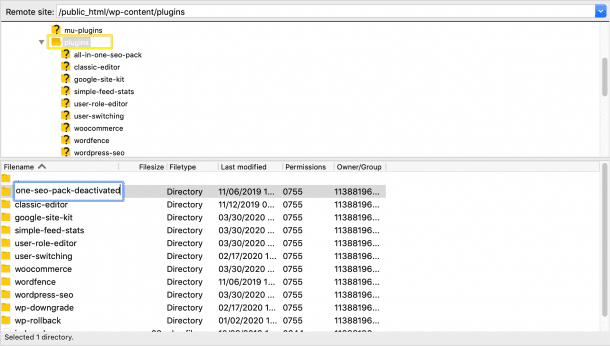

git mv takes at least two arguments, a source and a destination. Clones a repository into a newly created directory, creates remote-tracking branches for each branch in the cloned repository (visible using git branch -remotes ), and creates and checks out an initial branch that is forked from the cloned repository’s currently active branch. just the Directories/Folders themselves will be ordered as per the number you used while naming it in Step 3. For renaming files or folders use nothing but the git mv command. Upload all these directories back on Github Web.īy doing this, all the contents of your directories/folders will remain intact and in the same order as they were. eg: if u want some folder to appear first, change its name from 'xyz' to ' 1. When you move or rename a file, Git doesnt see that a file was. and so on' (in order that you want them to appear. Git keeps track of changes to files in the working directory of a repository by their name. Rename these folders on your pc, such that, you precede the name of the folder name with '1. (don't touch the internal contents of these folders) Unzip all the directories/folders on your pc.

(and don't want to move individual files manually)ĭownload the 'zip' for a directory. Locate the repository you want to rename by finding it from your repositories page.

#Github rename repository how to
Find out how to rename your repositorys default branch name in a. In the Repository Name field, type the new name of your repository. If you cannot see the 'Settings' tab, select the dropdown menu, then click Settings. Under your repository name, click Settings. When you finish editing your commit message, select Amend. On, navigate to the main page of the repository. Open the commit details of the last commit by double-clicking it, and then select the Edit option next to the commit message.
#Github rename repository update
When you do that, a VSCode-like editor will open, allowing you to edit folders and files to your heart's content! In my particular case, I was able to edit my folder in the web editor, then use the git extension in the editor to commit the change with one click.If you want to try it with the Github web: Today, many teams want to move away from master as the name of their default Git branch. The Git Repository window makes it easy to update your commit message. ) key and it will open the GitHub web editor! You can also do this by changing to v in the URL. When you're in any GitHub repository, you can hit the period (. Not only will I demonstrate how to rename the. So, in my case, I could go into a file inside the folder in question, hit the button to edit the file, and then update the folder name using this method.Ĭhange the name using the GitHub web-based editor If you need an example of how to rename a GitHub repository, you've come to the right place. It's not as intuitive as renaming a file, but I found a couple very easy options!ĭid you know you can add and delete folders from the filename editor itself on GitHub? I didn't, but there's a nice blog post on the subject from 2013 here. Git mv works like Unixs mv command the only difference is that the mv command works across the filesystem, whereas git mv is specific to the repository. In the upper-right corner of any page, click your profile photo, then click Settings. Remote repositories: Repositories that are hosted on a remote server, such as GitHub, GitLab, or Bitbucket. These are often used for individual development or testing. git subdirectory), and git will not even notice it - everything will continue to work. For example, you can rename directory containing your repository (one with.

So, I had to figure out a solution to rename my folder from the GitHub website, from my PC. Git repositories can be hosted in a variety of locations, including: Local repositories: Repositories that are stored on the developer's local machine. Git does not care how your git repository is named. Enter fullscreen mode Exit fullscreen mode


 0 kommentar(er)
0 kommentar(er)
